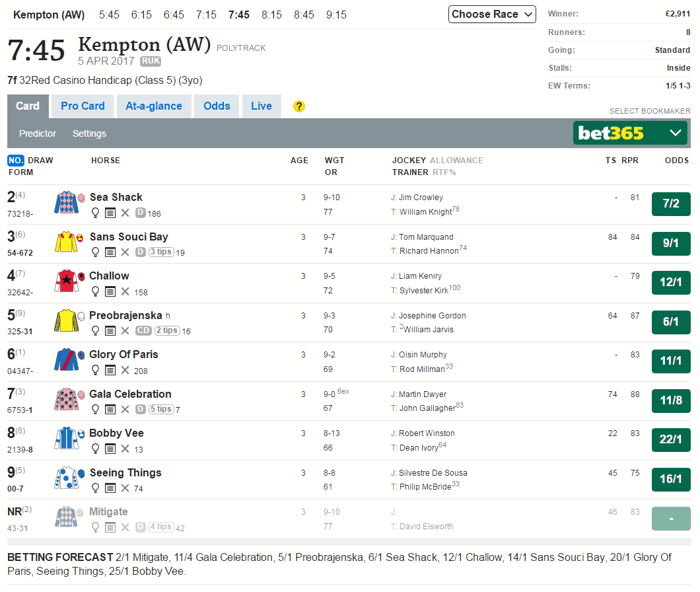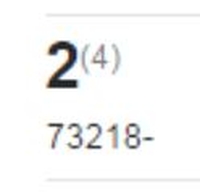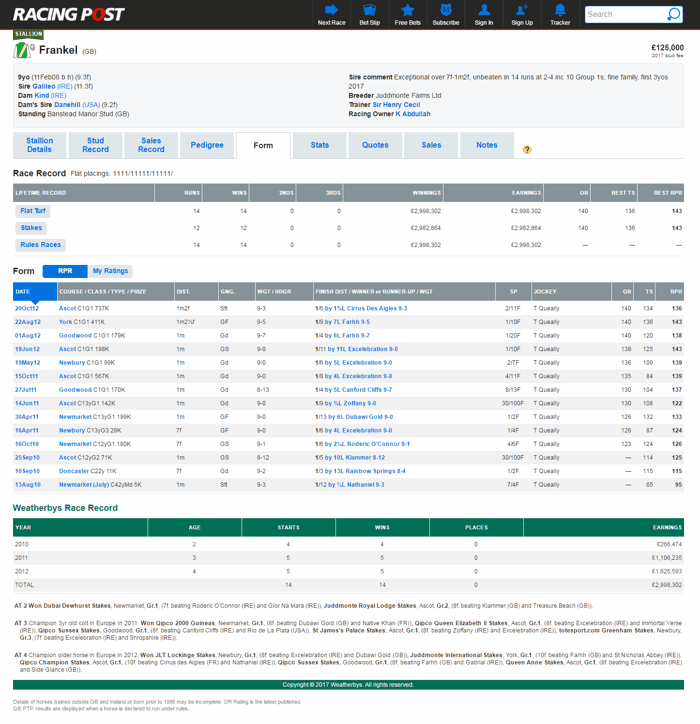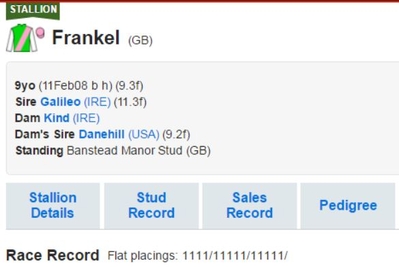Reading the race card, whether this is at the race course or online, can be confusing for some. Not understanding the card can mean a vital loss of information which can be crucial when choosing a bet; it may even just hinder your enjoyment of the race.
As an example, I’ve taken a handicap race at Kempton Park to show you what all the various symbols and numbers mean.
Race Information

In the top left of the card you will see:
7.45 Kempton (AW) Polytrack
 Here we have the time of the race and the venue.
Here we have the time of the race and the venue.
AW in this case means ‘all-weather’, indicating that the race is being run on their synthetic surface and not on turf.
Polytrack is the specific type of surface made up of sand and synthetic fibres. This sort of track is relatively fast, akin to good or good-to-firm ground on grass.
7f 32Red Casino Handicap (Class 5) (3yo)
![]() 7f means seven furlongs and is the distance the race is run over.
7f means seven furlongs and is the distance the race is run over.
32 Red Casino Handicap is the name of the race, including its sponsor.
Class 5 is the grade and 3yo means there is an age restriction in this race, which is for three-year-olds only.
The top right of the card features:
Runners, going, stalls, EW terms
 These are the number of declared runners also evidenced by the race card numbers you can see down the left of the screen.
These are the number of declared runners also evidenced by the race card numbers you can see down the left of the screen.
The ‘going’ is a description of the underfoot conditions, in this case ‘standard’. Most races on all-weather tracks are described as this, because weather doesn’t change them much. On turf, the going could be described as ‘soft’ when it has been raining, ‘good’ in normal conditions and ‘good-to-firm’ or even ‘firm’ when there has been fine weather and drying winds.
‘Stalls’ are used in flat racing to line up the runners as fairly as possible. The fact they are declared as being ‘inside’ means that stall no.1 will start right next to the inside running rail, rather than out in the middle of the track.
EW terms, in this case 1/5 123 means that if your horse is placed in an each-way bet, you will receive one fifth of the odds so long as the horse is in the first three. 12 would mean finishing in the first two.
For each individual horse you will see:
No. Draw Form
 This is their race card number, which in a handicap race is determined by their weight, i.e. the top weighted horse carrying no.1 and so on downwards. Draw, featuring in brackets, is their drawn stall, i.e. which starting stall they will be entered into. This is important as when the stalls are on the inside, a horse running from stall no.1 will be tight to the rail and may have an advantage over the horse drawn in stall 9 which will have slightly more distance to cover. This is the same case with human track athletes in lane draws.
This is their race card number, which in a handicap race is determined by their weight, i.e. the top weighted horse carrying no.1 and so on downwards. Draw, featuring in brackets, is their drawn stall, i.e. which starting stall they will be entered into. This is important as when the stalls are on the inside, a horse running from stall no.1 will be tight to the rail and may have an advantage over the horse drawn in stall 9 which will have slightly more distance to cover. This is the same case with human track athletes in lane draws.
Form indicates their form figures, i.e. in the case of horse number 3 here whose figures are 54-672. This means that the horse finished 2nd last time out, 7th before that, 6th before that and then the dash meaning a break in the year. Figures before that line were from a previous year or season. Should a horse finish below 9th place a ‘0’ will always be used. Other symbols you may see used as form figures are; F (fell), SU (slipped up), UR (unseated rider) or PU (pulled-up).
Name/Silks
 After the form figures, the horse’s silk colours and its name appear in bold. The three symbols you see here do not mean anything practical in racing terms and are unique to this particular website as a digital tool.
After the form figures, the horse’s silk colours and its name appear in bold. The three symbols you see here do not mean anything practical in racing terms and are unique to this particular website as a digital tool.
Next to the name you may see lettering such as C, D or CD. These stand for course winner, i.e a horse which has won at this venue, distance winner or course-and-distance winner. Right next to the horse’s name you may see ‘h’ (as in the case of no.5 here) which means the horse is wearing a hood. Any aids such as this are declared, so you may see ‘b’ (blinkers), t (tongue tie) or v (visor).
Age Wgt OR
 These stand for age, weight and official rating. In this case you will see that all of these horses are three-years-old.
These stand for age, weight and official rating. In this case you will see that all of these horses are three-years-old.
Weight means the amount they carry in stones and pounds – this weight is total and so includes the jockey and any lead in the saddle needed to make the weight up.
Official rating is the horse’s handicap mark, used to determine how much weight it carries. In the case of this race, it is obviously determined that the top rated horse, whatever rating it may have, will carry 9-10. The others carry less weight determined by their own ratings.
Jockey Allowance Trainer RTF%
 Jockey in this case is simply the name of the rider and any allowance would show next to their name in brackets if they were an apprentice and had a ‘claim’. Young riders with not a lot of experience claim a further 7lbs off the declared weight of their mount, then 5lbs when they have ridden 20 winners, 3lbs after riding 50 winners and then finally, having ridden 95 winners they have no claim at all and are a fully fledged professional.
Jockey in this case is simply the name of the rider and any allowance would show next to their name in brackets if they were an apprentice and had a ‘claim’. Young riders with not a lot of experience claim a further 7lbs off the declared weight of their mount, then 5lbs when they have ridden 20 winners, 3lbs after riding 50 winners and then finally, having ridden 95 winners they have no claim at all and are a fully fledged professional.
The trainer’s name will feature and in this case, with industry standard the Racing Post, RTF means ‘run to form’ and shows a percentage of how many of this trainer’s runner’s have run to their Racing Post racing in the last two weeks. The Racing Post rating is independent but is similar often to real handicap ratings.
The ratings are under the RPR which is seen on the right of the screen, next to the TS abbreviation which stands for TopSpeed, another type of Racing Post rating based on sectional timings. Here you can also see the latest odds with one particular bookmaker, though in a printed race card at the track you will have a betting forecast, known in the states as a ‘morning line’ which can be used as a guide.
Race cards differ just about everywhere depending on who published it and some will contain the prize money on offer to placed horses, a short précis of the runners and a conclusion as to the previewer’s expected winner.
Horse Information
As part of reading the form, you will see that a brief or full history of each horse’s own form will be published. I’ve taken the form of Frank to explain, digitally in this case, how to read the form book:

At the top of the page, we see the colours of the horse’s current owner and their name. The (GB) symbol, contrary to popular belief, does not have anything to do with where the horse is trained or who it is owned by but rather where it was bred, in this case Great Britain. Other symbols you will see very regularly are (IRE) for Ireland, (FR) for France and the self-explanatory (USA). In Britain, if there is no such symbol you can assume the horse was bred there.
As Frankel is retired to stud, his current fee is listed at the top per ‘cover’ though naturally those still racing do not have this information.
Below this you will see a box containing more abbreviated information. Down the left side you will see:
9yo (11Feb08 b h) (9.3f)
 These mean that the horse is nine years of age, it was foaled (or born) on 11th February 2008 and that it is a bay horse. Bay is its colour (explanation below) and ‘horse’ means a he is a ‘full horse’, i.e. a male horse that has not been gelded. A gelding would have g, a filly would have f and a mare would have m.
These mean that the horse is nine years of age, it was foaled (or born) on 11th February 2008 and that it is a bay horse. Bay is its colour (explanation below) and ‘horse’ means a he is a ‘full horse’, i.e. a male horse that has not been gelded. A gelding would have g, a filly would have f and a mare would have m.
Thoroughbred coat colours are described as; Bay (from a yellow-tan to a bright auburn), Black (black all over), Chestnut (red-yellow to golden-yellow), Brown (brown/tan/dark brown), Grey (grey all over), Painted (spotted pattern of white or dark colours all over – very rare). These colours are symbolised on the race card, in order, as b bl ch br g p.
Lastly in this group, the 9.3f in brackets means that this horse’s progeny tend to average this sort of racing distance, meaning even when they are inexperienced on the track you can take some sort of informed view as to whether they’ll be a middle-distance horse, or perhaps need a shorter distance.
Sire Galileo (IRE) (11.3f)
This means Frankel was sired by Galileo, who was bred in Ireland and whose progeny average 11.3 furlongs.
Dam Kind (IRE)
Frankel’s dam was named Kind and was again bred in Ireland.
Dam’s Sire Danehill (USA) (9.2f)
His grand sire was named Danehill, bred in the USA and his progeny average just over nine furlongs.
Race Form, Lifetime Record

Underneath this predominantly breeding information, we have Frankel’s race record or ‘form’. This lists his Flat placings. The / symbol shows a break in seasons from more than one year ago. The – symbol would should a break between this and the previous season. So, had he run 2nd, 3rd and 1st one year, then 2nd twice the following year before this season winning twice his form figures would read 231/22-11.
His Lifetime Record here will show how many times in total he has run, how many times he has won, finished 2nd or finished 3rd and how much prize money he earned in total. OR, as explained above, show the official rating he reached.
20 October 2012
Here we take an example of his last piece of form to explain the abbreviations used from left to right:

Asc (the race was at Ascot), C1G1 (the race was a Class 1 event in the Group 1 category), 737K (the race was worth £737,000 to the winner), 1m2f (the race was run over one mile and two furlongs, or a mile and a quarter), Sft (the going – or underfoot conditions – were described as ‘soft’), 9-3 (he carried 9st3lbs that day as his racing weight).

1/6 by 1¾L (he was first of 6 runners and won by one and three-quarter lengths in distance), Cirrus Des Aigles 9-3 (the second placed horse was called Cirrus Des Aigles and carried 9st3lbs. Had he lost, the winner of the race would be named here). 2/11F (his starting price was 2/11 and he was the favourite. Had he been 3/1 second favourite this was read 3/1 2F).
Going conditions are abbreviated as; Hy (heavy), Sft (H) (soft, heavy in places), Sft (soft), GS (S) (good-to-soft, soft in places), GS (good-to-soft), Gd (GS) (good, good-to-soft in places), Gd (good ground – the idea racing ground which is lush, not deep with mud and not too hard and fast for the horses), GF (G) (good-to-firm, good in places), GF (good-to-firm), GF (F) (good-to-firm, good in places), Firm (firm ground). Rather in than good-to-soft in Ireland, the Y symbol will be used, meaning ‘yielding’.
All of the above are for turf only, on the all-weather tracks St (standard) or Sl (slow) will be used.